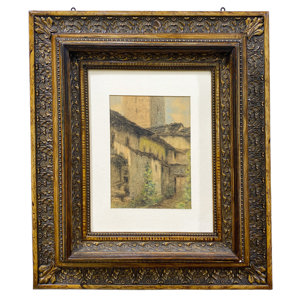Born on July 18, 1853 in Alessandria, in his youth Angelo Morbelli used to be a prodigious musician; however, after losing his hearing because of an infection, he was sent to study drawing by his parents. In Milan he attended the Brera Academy – where he received important awards – and became part of the social gathering of important Lombard families. Morbelli developed a critical attitude towards his own teachers, which led him to experiment with non-academic techniques, although the style of his works of art would keep on showing the influence of his academic background. During this period he painted the Goethe morente, an example of the strong link between his works and literature. While other artists, such as Giuseppe Pellizza da Volpedo, focused on the proletarian cause, Morbelli devoted himself to represent disregarded situations of hardship. The paintings he dedicated to the guests of the Pio Albergo Trivulzio are well-known: for example, Giorni…ultimi, which led him to win Fumagalli prize, and Venduta, which was first created in 1884.
The movements of Verismo and Romanticism enabled Morbelli to explore the use of light and colours. Venduta is an example of the artist’s practice to reproduce the same subject in several ways, using different techniques, framing and colours. He was a pioneer of Divisionism, which he tried to spread in Italy with the help of his friend Pelizza. Although they did not succeed, they received numerous awards in Paris, where many of their works had been bought. In the 1920s, Morbelli started introducing in his production also symbolism themes, which would lately receive his whole attention: in 1906 he re-painted Era già l’ora che volge al desìo, one of his well-known works. Even though people’s artistic tastes were changing, he continued to support and promote Divisionism, also by writing La via crucis del divisionismo, a trait in favour of Divisionism in the form of a diary. He died in Milan on November 7, 1919.


 Text via WhatsApp
Text via WhatsApp